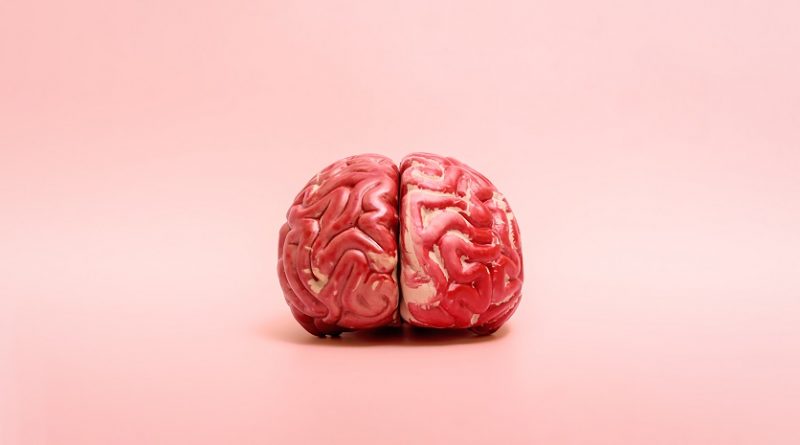Throughout the ages, philosophers and academics have long debated the underlying nature of human personality. Some looked to spirituality to explain human character, positing that a soul or life essence explains individual differences in temperament. Others, adopted a primitive biological model, suggesting that certain humours determine our moods and behavioral dispositions. Until the advent of the modern scientific method however, these models have been confined to the realm of discourse, being both unfalsifiable and unprovable.
Major advances in the fields of personality psychology and neuroscience however, are finally starting to shed light on the underlying causes of individual differences in human personality. Firstly, the discovery of the Big Five personality factors represents a major turning point in the study of human character (Goldberg, 1993). Using the statistical approach of factor analysis, five broad overarching personality traits were found, namely openness to experience, conscientiousness, extraversion, agreeableness, and neuroticism (commonly shortened to OCEAN). Since their discovery, a huge body of research has arisen to support the model’s validity, finding significant associations with job performance (Barrick & Mount, 1991), training performance (Schmidt & Hunter, 1998), subjective wellbeing (Gutiérrez, Jiménez, Hernández, & Pcn, 2005), and even longevity (McCann, 2005). Numerous personality tests exist now with worldwide popularity, and are used in many sectors such as part of psychometric testing in jobs and recruitment but also for personal development.
Perhaps more interestingly however, because the Big Five represents a quantitative model, whereby personality traits are assigned numerical scores, this allows us to identify associations with other variables, especially those in the physical realm. This is where neuroimaging becomes applicable to personality theory, revealing that the brain itself does indeed differ based on individual differences in personality. From a growing body of available literature, a large number of studies have found significant differences in brain structure between individuals based on their personality traits, and have also found many significant associations between personality and the functioning of specific brain regions.

Corporate Wellness App
CircleCare
In this article, I will explore the empirical evidence that links the Big Five personality traits to differences in brain structure and function:
Agreeableness: Highly agreeable people tend to be sympathetic, trusting, and compassionate individuals. Research suggests that highly agreeable people tend to show greater volume in regions that evaluate the intentions and mental states of other individuals, including the superior temporal sulcus, posterior cingulate cortex, and fusiform gyrus (DeYoung et al, 2010). Agreeableness is also associated with greater activity in the left dorsolateral prefrontal cortex, which is associated with emotional regulation and the suppression of aggression (Haas, Omura, Constable, & Canli, 2007).
Conscientiousness: Highly conscientious people tend to be organised, diligent, routine-orientated, and traditional. Research suggests that highly conscientious people tend to show greater activation in the prefontal cortex, which is responsible for the ability to follow complex rules and carry out plans (Bunge & Zelazo, 2006). Low levels of conscientiousness were also associated with activity in both dorsal and ventral regions of the lateral prefrontal cortex, which are linked to impulsivity and disinhibited behavour (Asahi et al, 2006).
Extraversion: Highly extraverted individuals tend to be social, assertive, gregarious, and naturally energetic. Research suggests that highly extraverted individuals tend to show greater sensitivity to the neurotransmitter dopamine, driving reward seeking behaviours (Berridge, Robinson, & Aldridge, 2009). High levels of extraversion are also associated with brain activity more generally, both at rest and in response to reward stimuli (Canli, Sivers, Whitfield, Gotlib, & Gabrieli, 2002).
Openness to experience: Individuals who are highly open to experience tend to be adventurous, variety-seeking, and creative. Research suggests that highly open individuals tend to show higher levels of activity in the frontal pole and the medial frontal cortex, related to intellectual engagement (Brown & Braver, 2005). As with extraversion, openness is also associated with dopamine sensitivity in the brain, suggesting a proclivity towards excitement and reward (Meyer-Lindenberg et al., 2006).
Neuroticism: Individuals who are highly neurotic tend to be anxious, emotionally volatile, and prone to mood-swings. Research suggests that highly neurotic individuals show higher levels of activation in the amygdala, insula, and anterior cingulate, which are associated with threat and punishment (DeYoung, 2010). Highly neurotic people also show higher levels of left frontal lobe activation, which is related to anger and emotional volatility (Harmon-Jones, 2004).
Although a significant body of literature exists regarding the Big Five and differences in brain structure, we must also acknowledge the limitations of such research. Firstly, these findings pertain to correlational studies, which investigate associations between personality and brain structure / activation. Because correlation does not imply causation, we cannot conclusively determine whether these neurological differences are the sole cause of individual differences in personality. Similarly, it is possible that the order of causality is reversed, and that differences in personality shape a person’s brain, rather than the other way around. Nevertheless, these findings do represent strong evidence of a connection between personality and neurological differences, certainly enough to warrant further study and investigation.
Conclusion
Overall, the emerging field of neurological personality psychology holds considerable promise. By linking major personality traits to specific regions or activation patterns in the brain, we get closer and closer to truly understanding the origins and determiners of human personality, helping us to answer questions which have perplexed humankind for millennia. However, as these findings reveal more and more about the nature of human personality, one must not fall victim to excessive reductionism and biological essentialism. Understanding the biological underpinnings of personality does not and should not invalidate a person’s individuality or their sense of identity, as we human beings are more than mere biological computers. Instead, we should see these findings as a single piece of the puzzle that represents human individuality, a puzzle too complex for any single field of science to ever completely understand.








